Product overview
The Olga™ dynamic multiphase flow simulator models transient flow (time-dependent behaviors) to maximize production potential. Transient modeling is an essential component for feasibility studies and field development design. Dynamic simulation is essential in deep water and is used extensively in both offshore and onshore developments, to investigate transient behavior in pipelines and wellbores. Transient simulation with the Olga simulator provides an added dimension to steady-state analysis by predicting system dynamics, such as time-varying changes in flow rates, fluid compositions, temperature, solids deposition, and operational changes.
From wellbore dynamics, for any well completion to pipeline systems with various types of process equipment, the Olga simulator provides accurate predictions of key operational conditions involving transient flow.
Release updates
We continuously strive to enhance our product and Olga 2024.2 brings multiple improvements, updates, and bug-fixes to benefit our users. The most important improvements are mentioned below. Please read the release notes for the full overview.
Improved Olga robustness
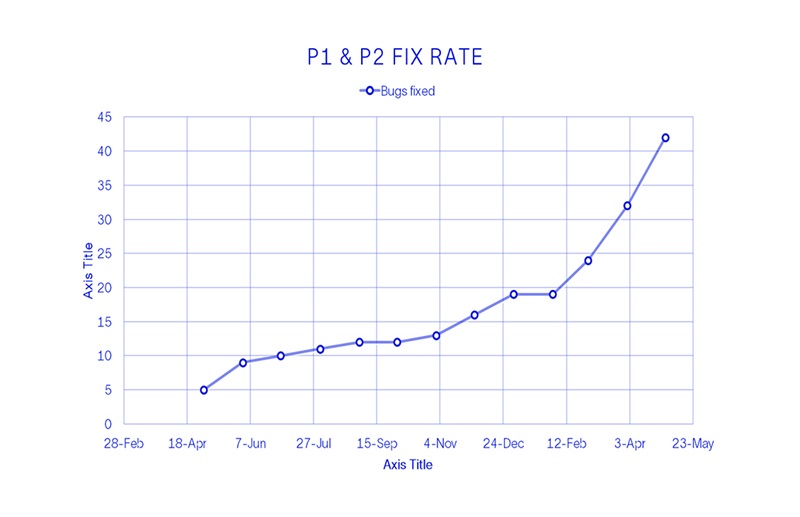
Improvements to parametric studies
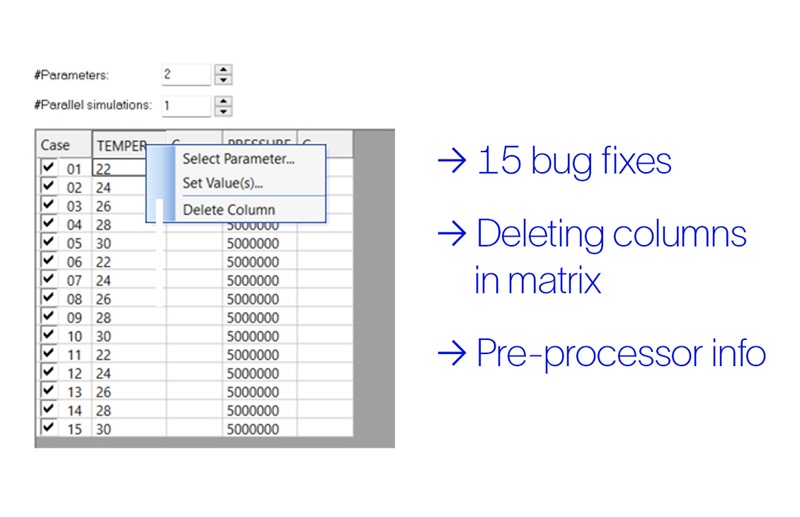
Olga 2024.2 introduces the following important updates to the parametric study functionality:
- Deletion of parameters: Users can now delete parameter columns in a study. A new “Delete Column” option is available in the right-click menu on the parameter column. If only one parameter is present in a study, the “Delete Column” menu item is disabled.
- Indicator for steady state pre-processor failures: Cases that end with a steady state pre-processor failure are highlighted in orange in the study window. This feature applies when the “Run” option is used to simulate cases.
- Improved sorting in plotting: When plotting parametric study results, sorting is based on the entire case name rather than just the first digit.
Improvement of inhibitor tracking
![]()
Olga 2024.2 is released with improvements for the inhibitor tracking functionality. Previously, the Olga simulator relied on built-in correlations to adjust the density and viscosity of the water phase containing inhibitors.
However, this approach could lead to inaccurate temperature calculations in the Olga simulator, e.g. for simulations where mono-ethylene glycol (MEG) or any other inhibitor was injected upstream a choke with a dP across the valve and Joule–Thomson (JT) cooling occurs. The new approach, released in Olga 2024.2, is using the Multiflash PVT package with high accuracy corresponding states model advanced (CSMA) equation of state (EOS) to adjust all water phase properties, such as density and viscosity of the water phase, but also thermal properties like thermal capacity and enthalpy. Notably, surface tension between water and gas, and between water and oil remains an exception. The improvement is relevant for COMPOSITIONAL equal to MEG, MEOH and ETOH.
Olga simulator single phase version update
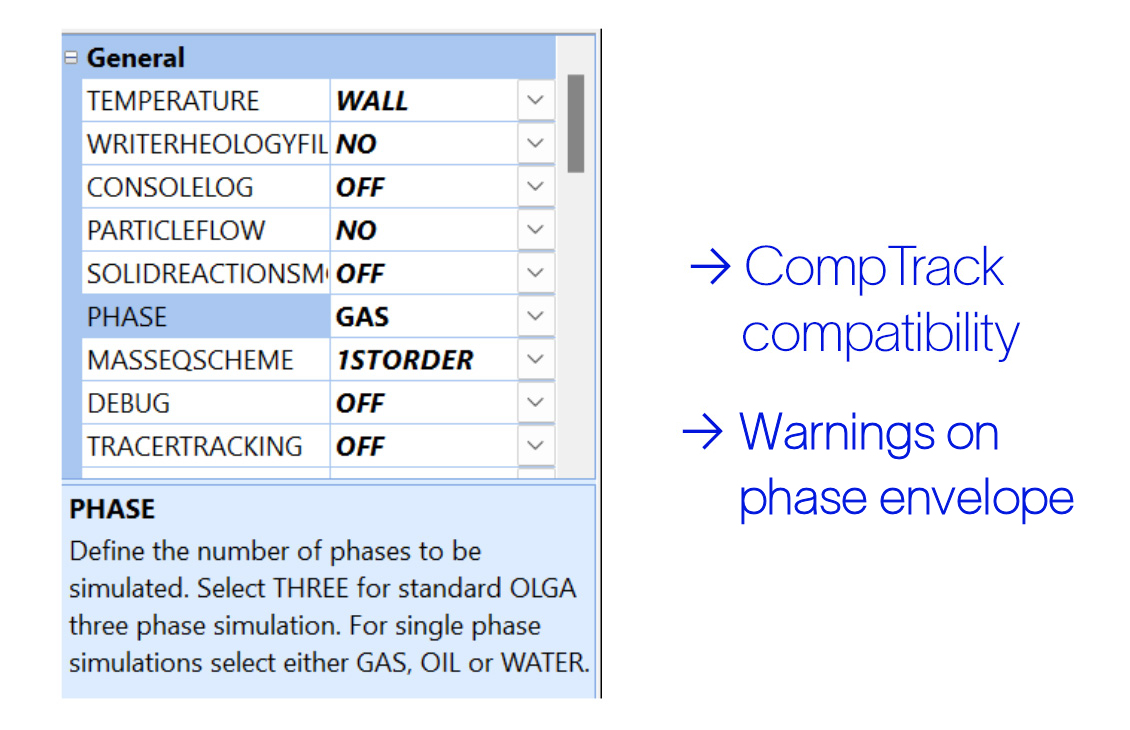
In Olga 2024.1 Olga simulator single phase was introduced. Olga 2024.2 is released with expanded functionality for single phase. Single phase option (PHASE = GAS, OIL, WATER) is now compatible with COMPOSITIONAL = BLACKOIL or ON.
Stabilized well control simulations in the Olga simulator
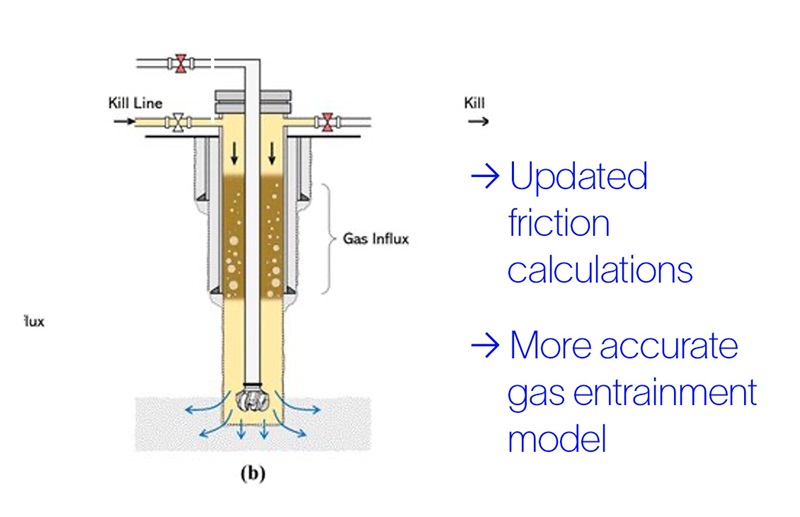
Olga 2024.2 includes updated numerics to handle counter-current flow. In the past, during counter-current flow, the upstream control volume was retained from the last time step of co-current flow. However, when the upstream control volume became filled with one of the phases, there was no interface between the two phases, resulting in zero interface friction. This situation could lead to a stagnant column of a light phase (such as gas) not being displaced by a heavy phase (oil or water) in a vertical pipe, especially at very high heavy phase velocities. To remedy this, the total volume flow is used to determine the upstream conditions for slip calculations. Furthermore, the amount of oil/water in a control volume is used to limit the amount of oil/water dispersed in water/oil in transient simulations. This is applicable to bullheading as well as any other scenario with counter-current flow.
Uncertainty/noise in transmitter and controller output
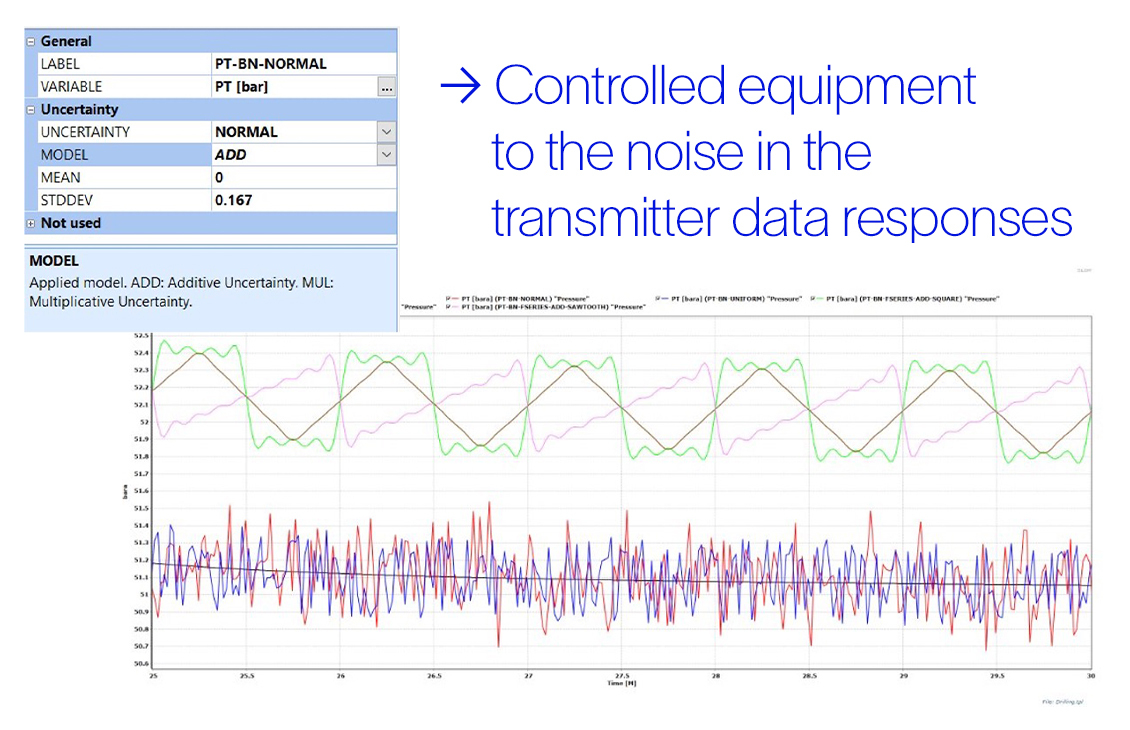
Olga 2024.2 introduces the functionality of applying uncertainty to controllers and transmitter signals. In the realm of uncertainty analysis, understanding how uncertainty affects measurements and parameter values is crucial. Accounting for uncertainty ensures robust decision-making and accurate system behavior. When uncertainty is applied to transmitters, it can represent measurement noise. When controllers are used to control parameter values on keyword keys, adding uncertainty on the controller output then represents input uncertainty on key value. Uncertainty can be applied to the transmitter OUTPUT as well as CONTROLLER outputs for controller types MANUALCONTROLLER and ALGEBRAICCONTROLLER.
The uncertainty can be random, where the user selects either uniform distribution or normal distribution. Multiple identical shaped uniform distributions can be combined to form linear (order=1) and higher order distributions. Deterministic periodic uncertainty can be applied in terms of finite Fourier series.
Update of Multiflash library
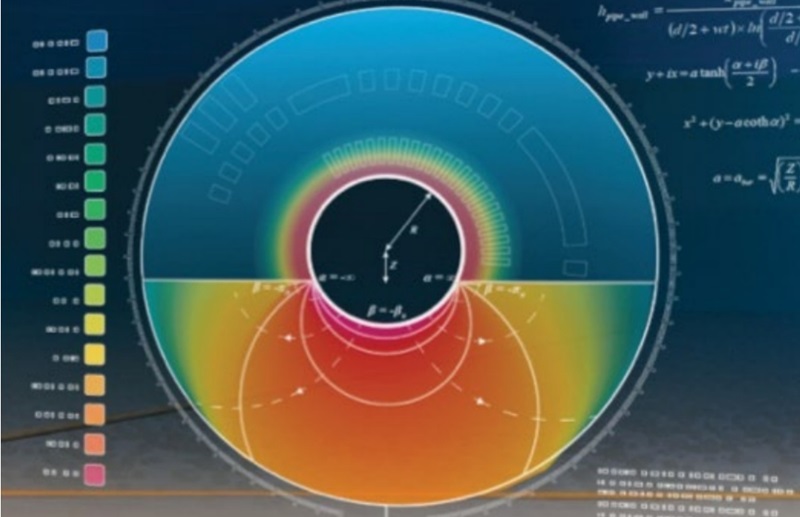
The KBC Multiflash™ library has been updated from the previous release, from 7.4.12 to 7.4.17. The new version contains several minor bug-fixes.
